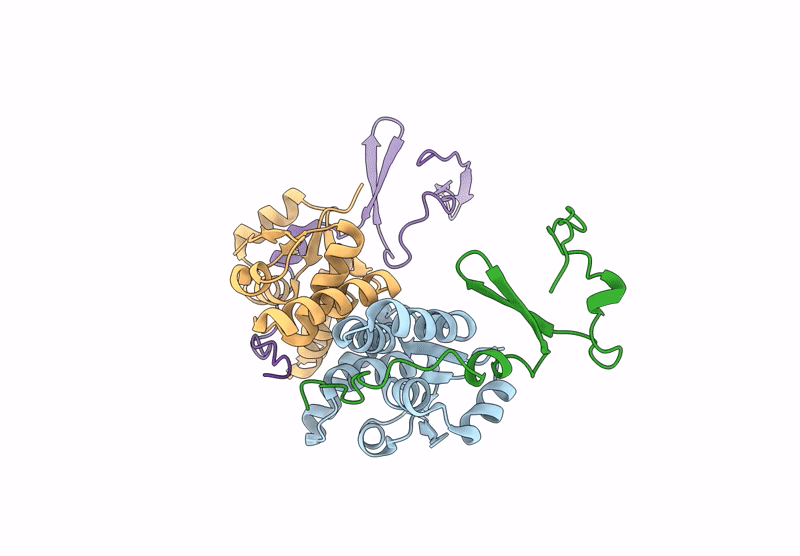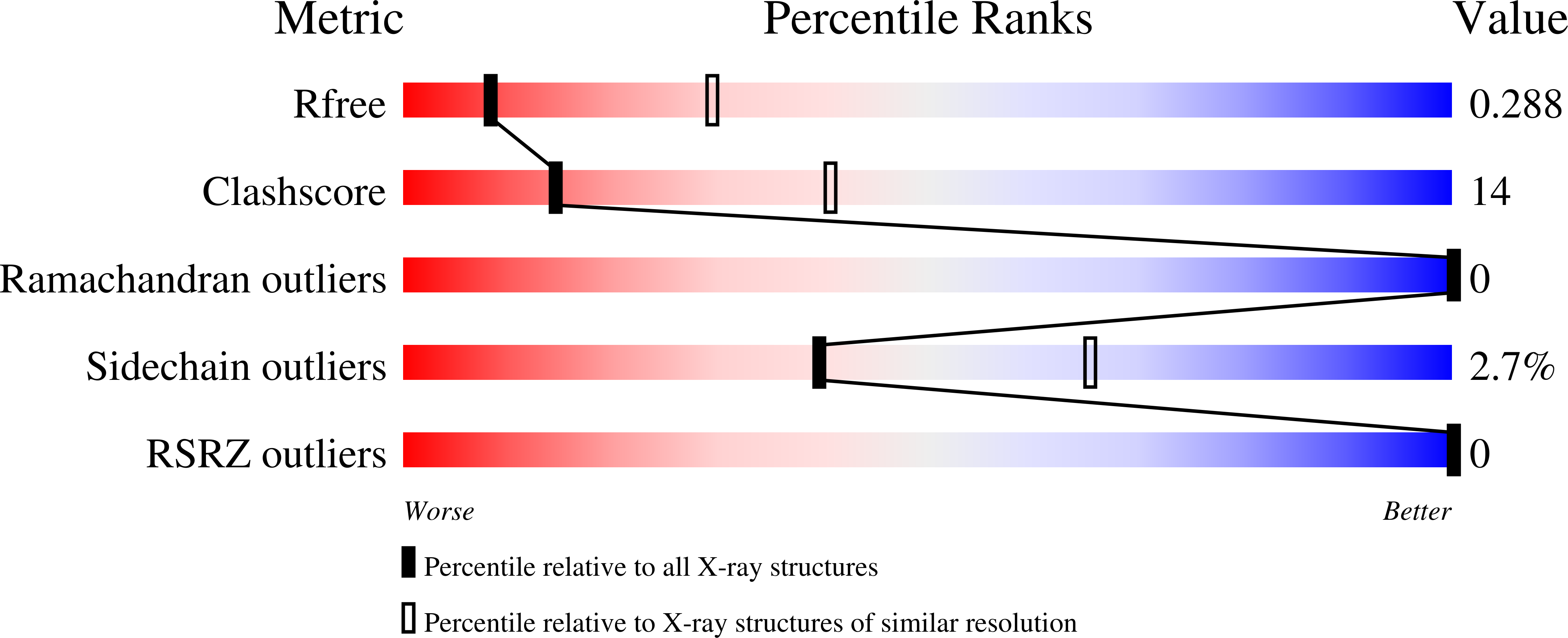
Deposition Date
2024-10-24
Release Date
2024-12-18
Last Version Date
2025-02-12
Entry Detail
PDB ID:
9H6D
Keywords:
Title:
Crystal structure of the E. coli F-plasmid VapBC toxin-antitoxin complex (VapB V5E)
Biological Source:
Source Organism:
Escherichia coli KLY (Taxon ID: 1435461)
Host Organism:
Method Details:
Experimental Method:
Resolution:
3.15 Å
R-Value Free:
0.29
R-Value Work:
0.24
R-Value Observed:
0.25
Space Group:
P 32 2 1


